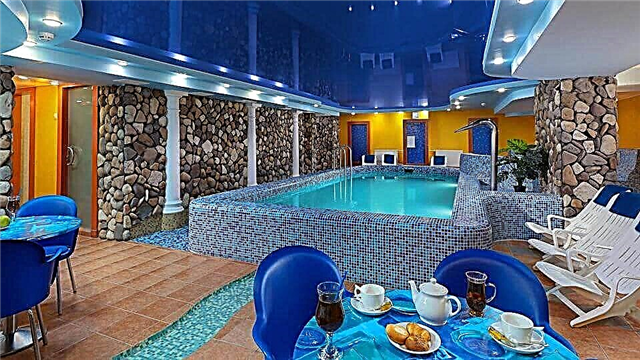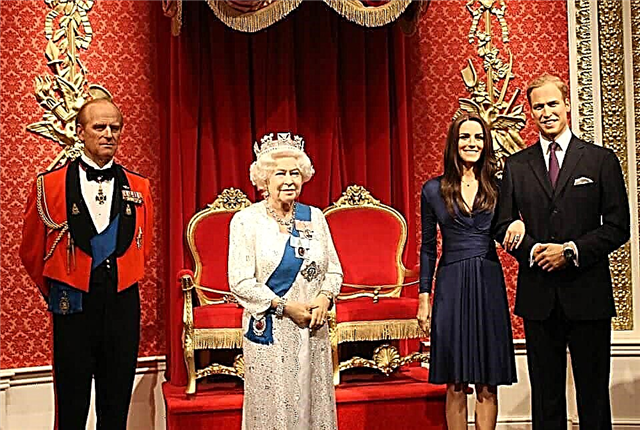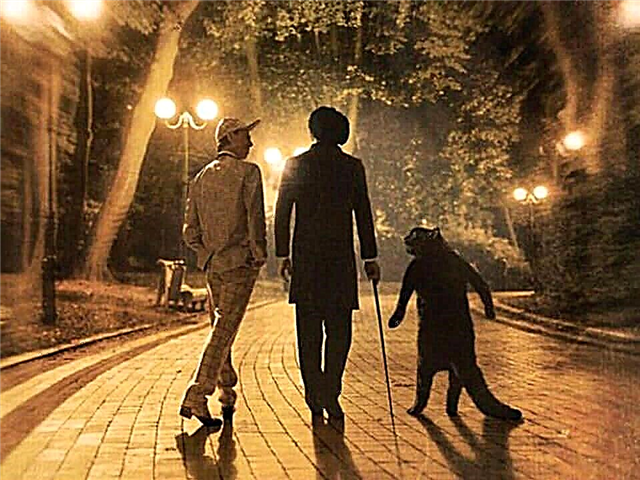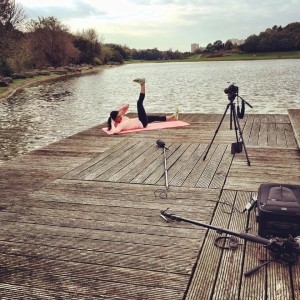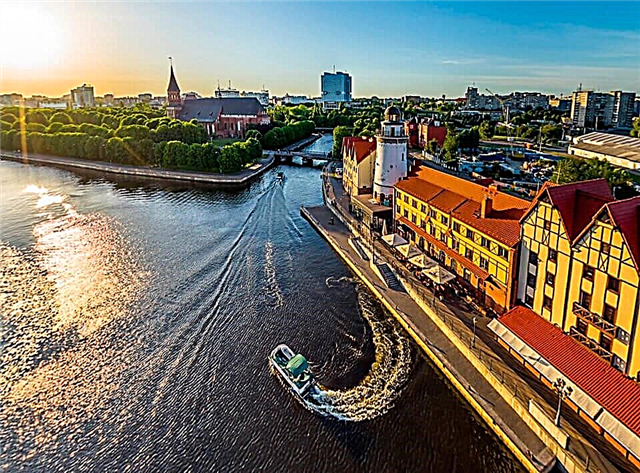The second capital of the Holy Land, as Tel Aviv is informally called, has an interesting history of its origin. At the beginning of the twentieth century, it began with the new Jewish quarter of the ancient city of Jaffa. Residents of the quarter named it Tel Aviv, which means “the hill of spring”, where the word “spring” is synonymous with “renewal”. Over the years, the quarter expanded, accepting more and more visitors from Poland and Russia, and with the coming to power of Hitler, thousands of German Jews rushed here.
In a short time, a city has grown on the site of the quarter, which is actively being built up with residential buildings and state institutions in strict German order. Among the architects were many graduates of the German Bauhaus, who tried to build according to a clear plan: the streets were perpendicular or parallel along the coast. A significant event for the unification of the two cities (new Tel Aviv and ancient Jaffa) took place in 1949, and Tel Aviv became the economic center of the blessed Land of Israel. Now the diverse city contains ultra-modern skyscrapers, low-rise buildings of the 30-40s of the last century and very ancient buildings. Let's talk about the most important sights of Tel Aviv.
Azriel Center

The modern landmarks undoubtedly include three unique skyscrapers - the center of Azriel, named after the designer of the architectural skyscrapers. The construction was funded by David Azriel, a Canadian businessman from Canada, who made such a gift to the city. From a distance, the skyscrapers look like giant volumetric models of geometric shapes: a triangle, a cylinder and a square. It was in this form that the author conceived them and, overcoming all difficulties, brilliantly brought his idea to life. The construction of the towers was started in 1996, two of them "grew" in 1999, the last (square) was completed only in 2007.

Now three beauties, gracefully towering against the background of the blue Israeli sky, delight the eyes of local residents and hundreds of tourists. The highest of them is the round tower (187 m), at a height of 182 meters there is an observation deck, which offers a bright, stunning perspective of Tel Aviv. Its triangular sister is slightly lower (169 m), and its square one is 154 m. All three skyscrapers are connected by a huge shopping complex on the lower floors. In total, the towers have 30 restaurants, about 200 shops, 8 auditoriums, a playground for children with exercise equipment, labyrinths, and a swimming pool. Azriel Center is the most visited place.
Pagoda house

The amazingly beautiful house, built in 1925 by order of the local entrepreneur Bloch, is very interesting for its architecture, more precisely, for its mixture of architectural styles. According to the popular legend, this happened due to the whims of the customer who changed architects: first, the author of the project was Alexander Levy, then an American architect, then again Levi. The latter, as if in revenge for the customer, embodied several styles of different cultures in his eclectic brainchild, as a result of which the House-Pagoda appeared.

The building of peculiar beauty consists of 4 floors, each of which has elements of a certain architectural style in the design. The first floor is decorated in oriental motives, with pointed arches of windows. The design of the second floor has a Byzantine style and features of medieval churches. The third floor is represented by the architecture of Greek temples and Doric columns. The fourth floor is presented in the form of a pavilion in the Moorish style with decoration of the facade with wall carvings, columns and figured arches. The miracle house ends with a multi-tiered roof in the Chinese style, for which it received such a name.
But the Bloch house is not only famous for this: it became the first private house where an elevator was installed in the 30s, which became a bait for children who want to ride on an outlandish elevator. Another innovation was the central heating of the house, which for that time was a technical innovation in the arrangement of buildings. In the unique house, apart from the owner's family, the families of famous people of Israel lived: the prosecutor on the charge of Eichmann; the first Israeli plastic surgeon Hayt; talented doctor Volokh. For some time the first floor was occupied by a synagogue, while others housed workshops and shops during the war; the basement was used as a refuge. The building is now owned by Robert Weil, a Swedish Jew who has restored the building to the delight of the residents.
Eretz Israel Museum

The thematic pavilions of the museum, opened in 1952, represent the historical and anthropological development of Jewish society, starting from the Copper Age. e. and ending with the 19th century. Visitors are truly amazed by the large number of ancient relics of the prehistoric period, which clearly demonstrate the rather high level of technical progress of those eras. This is especially noticeable in the pavilion "Man and His Work", where you can not only see samples of pottery, weaving, jewelry production, but also the methods by which the crafts were carried out. It demonstrates the processes of turning grain into flour and baking bread, various tools and all kinds of devices, amphorae and jugs.

The Nehushtan Pavilion (a symbol of the Copper Age) exhibits stone axes and hammers, silicon knives, copper chisels. Presented are original samples of smelting furnaces from different periods of pre-Christian development. A furnace in the form of a cup of the Copper Age (4000 BC); domed furnaces (Bronze Late Age); shaft furnace of the Iron Age. There are also fragments of a glass-smelting furnace (13th century AD), discovered during excavations in the fortress of the Crusaders of Sommelaria.
The pavilion of the Midianite Temple exhibits a model of the aforementioned temple. It was named in accordance with the name of the area where it was located - the Midian land, in which copper was mined (up to 12 BC). The pearl of the pavilion is the copper serpent Nehushtan with a gilded head. The Glass Pavilion houses an exhibition of ancient glass vessels, divided into 3 time periods of glass production - non-blown and blown. It also has its own "pearls": "rhyton" - a thin Greek wine horn with 2 holes; and the Blue Jug, signed by its maker, Ennion (1st century AD, first half).

The philately pavilion illustrates the history of the development of postal services in the period from the middle of the 19th century. until the middle of the 20th (1948), when the state of Israel was formed. Exhibits in the form of envelopes, letters, photos, posters, various samples of mailboxes are widely presented here. The most interesting object is a mail truck (1949). Philatelists will undoubtedly like the large collection of postage stamps, among which there are many very rare and valuable.
Caesarea National Park

This kind of unique park is the only one in the world where archaeological sites are located in the depths of the sea. It was opened in 2006 on the site of the center of the ancient Palestinian city of Caesarea, which went under water centuries ago. Now the territory of the national park includes, in addition to the underwater part, a modern comfortable beach, an old operating harbor, and many resort infrastructure facilities. Caesarea Park is the most popular place among tourists.

Massive stone walls have remained from the ancient city, now built up with picturesque art galleries, shops with bright showcases, cafes, restaurants, and rental points. A visit to this park is a mass of new, previously unknown impressions and knowledge, an exciting journey into the world of mysteries and new discoveries.Anyone who has scuba diving skills can explore the underwater part of the park, where there are port facilities, sunken ships, construction equipment used in the construction of ancient ports under King Herod (25 objects).
Four diving stations, equipped with all the necessary professional equipment, are located in the park. The 10-minute show "Traveling Through Time" - a video clip about the history of the development of Caesarea, clearly telling about it with the help of computer innovations. A visit to the cinema hall is impressive to the core, where on 4 screens the audience "meets" historical figures who played a significant role in the life of the city (Tsar Herod, Baron Rothschild, Hannah Senesh and others).

A fascinating attraction is the Tower of Time, located on the territory of an ancient fortress restored from the ruins. Here, visitors take a virtual walk through a giant screen through the ancient city, "enter" houses, "shop at the local market and meet ships at the port." Climbing to the very top of the tower, you can see the stunning beauty of the surrounding landscapes. Golf enthusiasts have the opportunity to show off their skills at a world class luxury golf club. Caesarea Park is an unforgettable place full of mysterious attractive power.
Diamond Exchange

In the age of the highest modern technologies and an increase in the level of intelligence of mankind, the primitive interest of homo sapiens in sparkling pebbles with the magical name "diamonds" has not faded away, but on the contrary, is growing more and more. This is evidenced by the state of affairs of the Israel Diamond Exchange, located in the suburb of Ramat Gan. Baron Oppenheimer, who left a diamond legacy, who knew well the passion of the rich and noble for exquisite stones, made a luxurious gift to the state. The Israel Diamond Exchange is the most influential and large-scale in terms of the turnover of diamonds and jewelry with them.
It is a versatile center for diamond processing and international trade, occupying 4 huge buildings. They house a diamond cutting factory, exhibition and trade halls, jewelry stores, office offices, a medical institution, a customs point, catering establishments and prayer places. The diamond exchange is a real city in a city where active life is in full swing every day, deals are made; where magic diamonds sparkle with their magic facets, attracting hundreds of thousands of clients, trade brokers and big businessmen with their brilliance.

Get here (only by prior arrangement) and curious tourists from all over the world. Here you can see the whole process of turning nondescript diamonds into jewelry masterpieces. The production is equipped with state-of-the-art equipment and a staff of highly professional craftsmen, so the exchange's goods are in wide international demand (annual turnover reaches $ 10 billion). An impeccable quality control system that meets international standards and the legal purity of transactions play an important role here.
An impressive visit to the Oppenheimer Diamond Museum, whose collections consist of diamonds, diamonds, various precious stones and jewelry. Among them are unique prehistoric relics discovered during excavations in Israel: the collection of "Golden Apples" made of silver. Many priceless exhibits are amazing:
- jewelry masterpieces of Israeli designers
- 140 items made by gem carvers in the form of animal figurines, various vessels and flowers
- an exhibition of accessories made of precious stones belonging to Indian maharajas from Jaipur and many other exhibits
The bridge of desires in Jaffa

An interesting place in the old city of Jaffa is the stone Bridge of Desires, connecting the opposite ends of the moat. Despite its small size and low-key architecture, the bridge attracts many people for its mysterious mystery. It contains all the signs of the Zodiac, according to legend, bringing good luck and the fulfillment of desires, if you make a wish and touch your zodiac image. People believe in miracles at all times, so everyone who visits Jaffa willingly comes here.
Gate of Faith

At one of the highest points of the coastal strip in the ancient city, there is a picturesque square arch - the Gate of Faith. They were erected by the order of the two Meir brothers, famous for the creation in 1965 of the tallest skyscraper of their time in the Middle East. The sculptor Kafri worked on the original sculptural composition in honor of the third brother Meir for 2 years.
The gate is made of noble Galilean stone, which itself is a rarity, not to mention the graceful sculptural images carved on the pillars of the gate. 4-meter vertical pillars are covered with images of the Old Testament patriarchs: Abraham, Isaac and Yaakov. The vertical pillars are based on stones from the Western Wall as a symbolic link with the First Temple of Jerusalem.

On one of the pillars, the biblical plot of the sacrifice is carved, where Abraham, bending over the lamb, raises Isaac up. The other depicts the plot of Jacob's prophetic dream, in which there are two angels above him, "beating" with their wings. On the horizontal stone crossbar of the gate, the sculptor placed an image of the implementation of the Testaments: the capture of Jericho by the Kohens carrying the Covenant Ark and swords. According to legend, the Gates have the magical power of fulfilling desires, if you go around them to the left, turn to face them, making a wish; close your eyes and touch them. Many sincerely believe in this and prove their case by their own example.
Fountain "Signs of the Zodiac"

Another object in Jaffa that fulfills wishes is a bizarre fountain, equipped in 2011 on the site of an abandoned well that supposedly possessed magic. The authors of the sculptural framing of the fountain, not without a grain of good irony, created images of the Zodiac signs, putting a humorous flavor into them. Each of those who come to the fountain throws a coin into the water and, having made a wish, must touch his sculptural sign. The crowd of people at the fountain clearly illustrates people's belief in miracles.
Park "Mini Israel"

The Holy Land of Israel has so many historical, cultural and archaeological attractions that even a cursory inspection will take a long time. Anyone who certainly wants to see unique monuments can do it in one day in the Mini-Israel miniature park. An unusually interesting park is located in the vicinity, in Latrun, not far from Ben Gurion airport. The territory in the form of a Star of David is divided into 6 sectors, each of which represents a mini-city or mini-region of Israel.
There are 350 objects-miniatures in the park, exactly repeating in their appearance the real prototypes of reproduced monuments of religion, architecture, art and culture. The layout of the models is observed relative to each other, each of them is surrounded by landscapes corresponding to reality. Moreover, they were created by the painstaking work of landscape designers and agronomists not with artificial trees and shrubs, but with living dwarf plant specimens. Here you can see temples, churches, theaters, natural unique places.

Figures of people and animals (30 thousand) cause special delight, some of them (4.5 thousand) perform mechanical movements, depicting activity: people work, walk; animals run. Auto transport runs along the roads of the mini-state: trucks, buses, cars (3500 units). Sea vessels, boats (100 pieces) move on water surfaces.
At the mock-up airfields, the planes froze during loading (20). The organizers did not forget about the 1 km long railway, on which the funiculars actually move.To ensure the movement of all objects, more than 40 km of electric wires and cables were laid underground, 400 motors were used; installed sensors (700 pieces), bulbs and flashlights (2000 thousand). A gigantic work has been done, which has not yet been fully completed due to the creation of new objects. A visit to "Mini-Israel" shakes to the depths of the soul with the scale of the work invested and arouses sincere admiration for the true beauty of the objects created.
Rothschild park

This park, founded in honor of the Rothschild married couple, is an example of an elite, perfectly groomed and superbly landscaped area, where the underground Rothschild family crypt is located. The remains of the baron himself and his wife are buried in it, as the magnate bequeathed during his lifetime.
The park flora here is very rich and varied, there are many species of exotic plants, trees and ornamental shrubs. Amazing landscape landscapes are surrounded by wonderful fountains, artificial ponds with beautiful fish living in them. Cozy paths with stone benches on the sides are conducive to a peaceful rest. For locals, Rothschild Park is a favorite walking place.
Frank Meisler Gallery

A graduate of the Faculty of Architecture at the University of Manchester, Meisler became a popular and talented sculptor. Having moved to his historical homeland in 1960, he was actively involved in creativity and created many original metal sculptures. As a material, he used gold, silver, bronze alloy with other metals and decorated his creations with precious stones, turning sculptures into jewelry. Many of his works have moving parts, secret "highlights". For example, in the "sculptural" Picasso, you can flip the floor of the jacket and look inside.
Some of his masterpieces are captured in motion, like a girl racing on a skateboard. She holds the phone to her ear with one hand, and holds the child under her arm with the other. Probably, the sculptor in such works reflected the frantic pace of life of a modern woman. The striking expression and amusement of Meisler's sculptures attract numerous admirers and connoisseurs of his work.
White City

In the nineteenth century, many Jews were forced to immigrate, causing Old Jaffa to literally crack at the seams. As a result, a new city was founded - the first Jewish city among the sand dunes, rebuilt since biblical times. The second wave of immigration came at a time when anti-Semitic policies in Germany were escalating. Many Jewish architects were from the Bauhaus school, which was supposed to combine functionality and aesthetics. This is how the White City grew up, perfectly adapted to exist among the sands under the scorching eastern sun.
Today, throughout the city, here and there are scattered neighborhoods, whose construction took place in the interwar period, as well as in the first decade after World War II. A particularly large concentration of Bauhaus-style buildings is observed in the city center. And at the beginning of this century, the White City was officially protected by international cultural organizations, as a unique architectural nursery of the beginning of the last century. New buildings in a similar color appear today. Modern architects respect old traditions and try to make sure that their buildings do not stand out too much against the general snow-white background.
Trumpeldor cemetery

One of the city's most famous cemeteries is located right in the city center. The charm of this place has nothing to do with the rural simplicity of the old cemetery near Lake Kinneret, as well as the atmosphere of holiness here, as on the Mount of Olives. This place appeared during a cholera outbreak, when the bodies were no longer placed in the old cemetery. After some time, after a series of rituals, the heat subsided, and cholera stopped taking lives.
They tried not to use the cemetery, as it was surrounded by sand dunes that swallowed the tombstones. Due to Jewish traditions, some people had to be buried at night, and the processions were lost before reaching the place of the supposed grave. This continued until the road to the cemetery was consecrated. Soon, not only ordinary people, but also politicians, artists and Zionist leaders began to be buried in the cemetery.
Diaspora Museum

The Museum of the Jewish People is named after Naum Goldman. It is located on the Tel Aviv University campus right in the middle of lush gardens. At the time of its creation - in 1978 - it was one of the most innovative complexes in the world. The expositions of the museum are designed to visually demonstrate the history of the Jewish people. The artifacts are divided into six independent sections.
The "Family" section with a variety of household items and models of Jewish communities of all continents is transferred to the "Religion" section with miniatures of synagogues from all over the world (including a large Chinese synagogue). The Culture section has a unique exposition dedicated to the revival of Hebrew. The sections “Among the Nations”, “Return to Zion” and “Community” do not need additional introduction. In addition, the museum has a large collection of visual documentation.
Church of the Apostle Peter

The Church of the Apostle Peter and Righteous Tabitha has a bell tower, which is one of the highest points in Jaffa. In the proportions of the temple, the Byzantine influence is clearly felt. This feeling is enhanced when you look at the dome of the church and the murals that adorn its walls from the inside. Both local craftsmen and Italian architects were involved in the construction. The icons were created by Anton Ledakov, an outstanding master from Russia.
It is noteworthy that although initially the site for the construction of the church was chosen almost spontaneously, according to the results of archaeological excavations, which were carried out much later, an ancient tomb of the supposedly most righteous Tabitha was discovered. There were also rich Byzantine mosaics, presumably from the fifth century.
Yarkon Park

Tel Aviv can hardly be called a green or blooming place. The local jungle has grown on glass and concrete. The earth, warmed by the eastern sun, was not generous for more. This is why Yarkon Park is so significant. It seems that the Israelis have decided to compensate for the widespread lack of greenery by planting more than thirty-eight hectares of land with shady alleys.
A Botanical Garden with the largest collection of cacti, a water park that invariably attracts tourists, a children's corner with numerous animators, and even dug an artificial lake, on the shore of which a "bird's place" is now open, was built here. Also noteworthy is the Japanese-style rock garden. The most diverse live music is heard from all sides - from artsy classics to youth amateur ensembles.
Habima theater

Today, the Habima Theater is rightfully considered the oldest repertory theater in Israel. Its history is quite dynamic. It was originally opened in Russia in 1913, but almost immediately due to funding problems, the theater was closed. Four years later, the government was again asked to open a Jewish theater. The new theater building was often called a snuffbox because of its modest size, but it was in it that some of the most famous plays were played: "A-Dibuk", "Primordial Ball" and many others.
Subsequently, the theater changed its location more than once, and the brilliant troupe conquered the stages of France, Germany, the USA, Latvia and other countries. But after another tour in 1927, most of the troupe decided to move to Palestine, while the artistic director himself remained in the United States. The modern theater of Habima is a kind of partnership. He continues to develop confidently. And "A-Dibuk" has become a legendary production.
Old port

The Old Port is located at the confluence of the Yarkon River into the Mediterranean Sea. The need to open it appeared during the British Mandate, when Arabs began to attack Jewish immigrants. Around the same time, a blockade of cargo deliveries began in the Jaffa port. All this forced the city authorities to seriously approach the opening of a new port. The first bag of cement that arrived in the city in 1936 is still part of the local museum. The port was not particularly large.
This was not required, since only maneuverable boats entered the city, which could deliver cargo to the city from ships at anchor. The old port worked until the creation of the port in Ashtoda. Then he was forgotten for almost thirty years. The modern port is a tourist area with cafes and bars. The best time to visit is on Saturday, when antiques dealers appear on the street.
Neve Tzedek

Neve Tzedek is a cultural and historical monument that allows you to see the best examples of architecture of the 19-20 centuries in colors. Once exceptionally rich people lived here, which left a certain imprint on the atmosphere of this place. It was built up spontaneously, since there was simply no urban planning plan.
At some point, Neve Tzedek, due to an extremely rapid industrial leap in the last century, found itself in a dense ring of skyscrapers and could well have gone for demolition. Fortunately, this did not happen, and today this quarter is the center of the local bohemia. Many art galleries are concentrated here, and the rich decoration of the facades of old mansions turns a walk through it into a bright carnival of masks.
Ilana Gur Museum

Ilana Gur's House is also a museum displaying contemporary art objects. It is such a motley atmosphere that perfectly suits such a bright personality as Ilana Gur. She was the granddaughter of the founder of one of the classical art schools in Tel Aviv, but she never finished school. However, this did not prevent her from receiving the Roscoe Prize and making acquaintances with many presidents.
The museum owns an old Jaffa house that once served as a hotel for Jewish pilgrims. Outside, a narrow street, inside a huge space. Usually the most overwhelming impression is made by the monks' room, in the center of which is a wooden table and twelve chairs. Fancy objects and iron plants are set on the table.
Palmach Museum

Palmach is more of an experimental museum. Despite its seemingly not too exciting theme, it is very interesting. All expositions are devoted to the history and traditions of the "Shock Companies", which consisted exclusively of Jewish conscripts. There are only twelve rooms, but the way of presenting the material is somewhat different from the usual museum format.
The excursion is based not on dry documents gathering dust under the windows, but on the living stories of eyewitnesses. A small performance comes out, which is accompanied by spectacular special effects, as well as a voluminous film, the filming of which was based on documentary evidence.
Art Museum

The Museum of Fine Arts is actually understood as a number of practically independent pavilions, in which samples of canvases and sculptures of modern art, starting from the nineteenth century, are concentrated. The most striking are the "temple of modernism", the sculpture garden of Lola Ebner, the Elena Rubinstein pavilion, as well as the main building, whose expositions moved here from Dizengoff's house. Here, both Israeli masters and recognized Western masters are exhibited: Renoir, Matisse, Picasso, Monet and even Pollock.
The collections of museums are constantly replenished with generous donations and gifts that patrons regularly make, strengthening the cause of Meir Dizengoff, the first mayor of Tel Aviv, who believed that the city needed not only harmony of architecture, but also cultural awareness.
Israel Defense Forces Museum

Israel's main museum of military equipment is located in Neve Tzedek, one of the districts. The museum highlights some particularly striking pages in the history of Israeli military affairs. The halls dedicated to the activities of the Jewish underground are worthy of special attention. In particular, the "Haganah" organization was active both during the British Mandate and during the country's independence. There are also dozens of pieces of military equipment. Moreover, not only purely Israeli achievements of military science are presented here, but also captured weapons and weapons that were confiscated from various terrorist organizations.
Jaffa clock tower

In the center of old Jaffa, on Clock Square, stands the Clock Tower, which is the physical embodiment of a shift in social thought towards secular culture. It was built at the beginning of the last century in honor of the twenty-fifth anniversary of the reign of Abdul Hamid II. Similar structures appeared throughout the empire. It is noteworthy that it was built mainly with donations from local Jews and Arabs. This architectural monument is in no way associated with religion, although outwardly it evokes associations with the old European church. Today the tower clock shows two times - local and European. At two o'clock in the afternoon, the ringing of tower bells is heard over the city.
Soaring orange tree

One well-known urban legend is associated with this unusual landmark. They say that once a man wanted to grow an orange tree near his home. It would seem such a simple desire! However, it turned out to be impracticable, since the legislation was very strict regarding those wishing to grow something on the territory of the Old City. Years of litigation have yielded nothing. The owner of the site had no choice but to plant the tree in a vessel that did not touch the ground, thereby violating the law.
Unfortunately, this witty legend is just a legend. And the soaring orange tree is by no means a spontaneous installation by René Morin. However, residents quickly fell in love with this strange monument. A huge ceramic vessel and a lush tree perfectly fit into the overall style of the ancient city.

